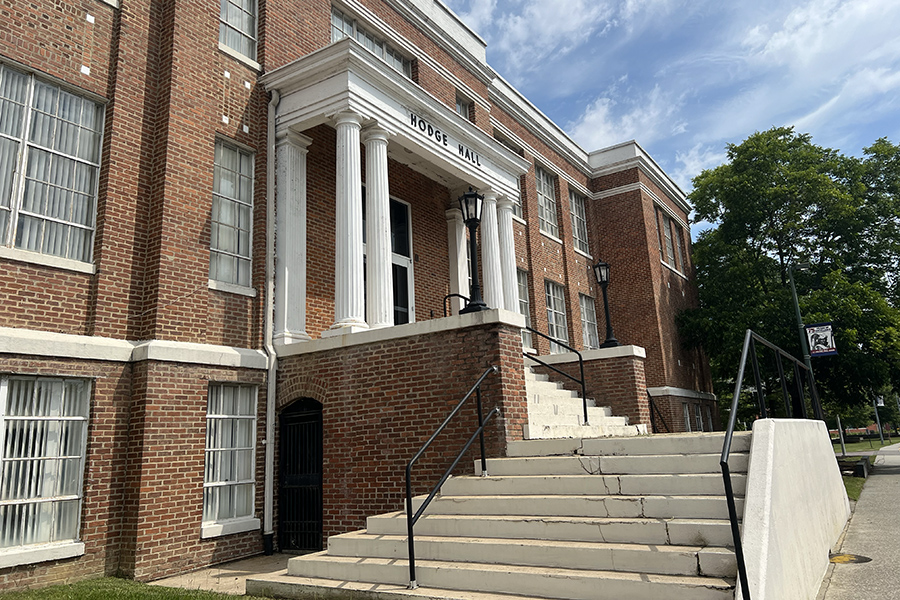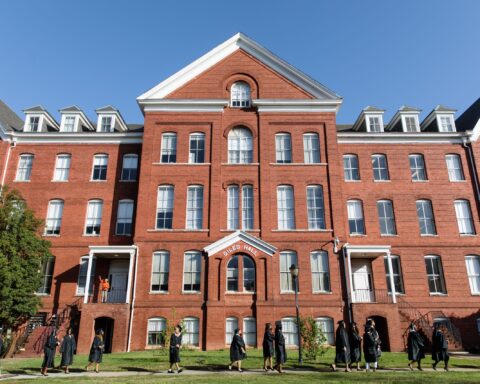Courtesy of South Carolina State University
South Carolina State University has been allocated $8 million in state funding that will take education and research in the College of Science Technology, Engineering, Mathematics and Transportation (STEM-T College) to a new level.
Four years in the making, the Research Partnerships and Workforce Training Programs are a partnership between SC State, the University of South Carolina (USC) and Clemson University in support of the Savannah River National Laboratory (SRNL) and the Battelle Savannah River Alliance (BSRA).
The state has allocated an initial $40 million proviso, of which $8 million comes to SC State, with the promise of significantly more funding as objectives are met.
“SC State already enjoys productive and mutually beneficial relationships with SRNL and BSRA,” SC State President Alexander Conyers said. “These funds will strengthen those connections and transform our STEM-T College into an even greater asset for the people of South Carolina and our students.
“I thank Gov. Henry McMaster and the General Assembly for supporting this visionary milestone in the development of SC State and our partners in this critical endeavor,” Conyers said.
The Research Partnerships and Workforce Training Programs’ overall objective is to provide a talent pipeline for SRNL and coursework to support professional development for the site’s existing workforce.
SC State is the only institution in South Carolina and the nation’s only HBCU (historically Black college or university) offering a bachelor’s degree in nuclear engineering, hence its importance to SRNL. SC State also manages the Savannah River Environmental Sciences Field Station, which provides hands-on, field-oriented experiences for students.
From SC State’s perspective, the initial $8 million in state funding for the Research Partnerships and Workforce Training Programs is a game-changer for both research initiatives and the marketability of its graduates in STEM fields.
“This investment underscores the state’s commitment to preparing our students for the jobs of tomorrow, ensuring they have the skills and knowledge needed to thrive in a rapidly evolving STEM world,” said Dr. Frederick Evans, SC State provost and vice president for academic affairs. “Expanding access to STEM education empowers our youth to innovate, create, and drive our state’s future economic success.
“The financial support will also position our students to engage in more strategic research within the STEM field and strengthen our alliances with business and industry, which will lead to new curricula to support workforce development in the State of South Carolina,” Evans said.
According to Elbert R. Malone, SC State associate provost for research and sponsored programs, SC State’s share of the proviso will support:
- The employment of 12 new research faculty in such areas as environmental engineering; the basic sciences of biology; chemistry and radiochemistry; health physics; nuclear engineering; cybersecurity and networking.
Scholarships and internships for undergraduate students. - Three Centers of Excellence — The Center for Energy and Environmental Solutions; the Center for Nuclear Criticality, Radiochemistry and Spectroscopy; and the Center of Academic Excellence in Cyber Defense Education.
Placing faculty jointly appointed at SRNL in mission-relevant areas. - Establishing two pre-college institutes – the Summer Bridge Program for young students and the Summer Science Institute for teachers.
- STEM lab enhancements including equipment and modifications to conduct cutting-edge research and provide high-quality educational experience to STEM students. In addition, SC State is using other funding sources to renovate labs in Hodge Hall for the program.
“These funds will be transformational to the STEM-T College because it will provide an opportunity to build a robust research infrastructure that will allow the university to compete in the research arena on national and international levels, particularly as we move toward Research II status,” Malone said.
Conyers has set a goal for SC State to reach Research II (R2) status, which would position the university to compete for more federal and corporate funding for research-driven initiatives.
“The $8 Million allocation is a huge blessing to the university and the STEM-T College,” said Dr. Stanley Ihekweazu, the college’s dean. “Through this appropriation, we hope to be able to do a number of things including but not limited to hiring research scientists to conduct research especially as we quicken our steps into R2 status, offering scholarships to students, and acquiring needed equipment.
“We are truly excited and hope to hope to move the university and the STEM-T College forward,” he said.
The universities outlined a five-year plan, and the initial grant will support the efforts for the first two years, after which the additional funding would kick in.
Of each new faculty member’s time, 75% will be devoted to research with the remaining 25% dedicated to instruction. The faculty members eventually would be responsible for bringing in their own research funding, keeping the imitative alive after the grant period expires.
BSRA brings world-class expertise in laboratory management, nuclear operations, national security, and scientific research to Savannah River National Laboratory. Along with SC State, USC and Clemson, the BSRA’s team includes Battelle, an Ohio-based private nonprofit applied science and technology development company, plus two other universities with expertise in a wide range of areas relevant to SNRL: Georgia Tech and the University of Georgia.





